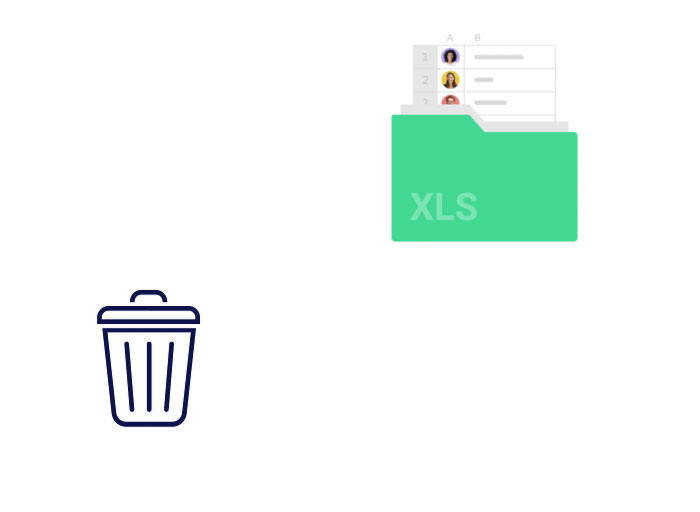Paid time off (PTO) and sick time are essential elements of your employee benefits package. They attract talented recruits, reduce employee burnout, and can prevent the spread of illness.
Before making decisions, HR professionals must understand the differences between these two types of time off. Key points to understand are what PTO and sick time are used for, the policies that accompany them, and the laws they must follow.
Employees can use PTO for any reason, whereas sick time should only be used for situations involving illness. So, there will be a difference in the maximum number of days off per year, whether they carry over, and other factors.
Let’s look at what sick time vs PTO are, and the differences between them.
What Is PTO?
PTO stands for paid time off, but can also be used to mean personal time off. PTO is an allowance of days per year that employees can take off and still receive their regular salary or wage.
Employees can take PTO for any reason—some common ones include:
- Going on vacation
- Spending time with family and friends
- Childcare
- Observing national or religious holidays
Your employee may or may not be entitled to PTO, depending on how long they’ve worked with your company and the terms of their contract. There are two main types of PTO you can offer employees:
- Accrued PTO: With this option, employees’ PTO allowance grows gradually over time. For example, a worker may accrue five PTO days every three months. Employees can’t take more than their accrued number of paid days off. Often, accrued PTO rolls over from year to year and there’s a maximum number of accrued PTO days a person can have at any point.
- Banked PTO: The PTO bank is a set number of PTO days per year, which employees can use at will. You can, however, limit how many days off someone can take in their first three months. Each year, the number of PTO days resets and employers can prohibit the carryover of unused PTO days to encourage employees to take time off. This is called a use-it-or-lose-it policy.
What Is Sick Time?
Sick time, or sick leave, is time off work due to illness and can be paid or unpaid. If your business is subject to the Family and Medical Leave Act (FMLA), then you must, under federal law, provide unpaid sick leave to your employees. Paid sick leave is not required under federal law. Check local state laws for regulations on paid and unpaid sick leave.
Someone may use sick time because they:
- Suffered an injury
- Suddenly feel sick
- Have a chronic illness
- Are receiving medical treatment
- Need a mental health day
- Are caring for a sick relative
Similar to PTO, sick time can take two forms:
- Accrued sick time: Employees earn more sick days with time. This is often used for paid sick leave. A common accrual is 0.5 paid sick days per month worked—in this case, an employee can’t take more than three paid days off in the first six months of the year.
- Banked sick time: Employees get a set number of sick days per year, which can be used whenever necessary. These can be paid, unpaid, or a mixture. You can choose whether unused sick days roll over to the next year as a general policy, but you might wish to practice discretion based on individuals’ health circumstances.
Pro Tip
Make sure your employees know how to call in sick, including your preferred communication method and the company-wide policy on sick time. An employee management app, like Connecteam, comes with in-app chat, newsfeed, PTO policy creation features, and document storage to ensure your employees have access to all this information.
Get started with Connecteam for free today!
How Are PTO and Sick Time Different?
The key difference when looking at sick time vs PTO, is that, for sick time, you must be ill or caring for someone who is, whereas, for PTO, you can take time off for any reason. Sometimes, employees may use PTO days for sick time, but the two are generally kept separate.
Here are other important differences when considering PTO vs sick time.
Paid vs. unpaid
Sick time can be paid or unpaid, and having a mix of both in your employee benefits package can help control your company finances. If you’re incorporating unpaid sick time, you don’t need to pay for the full duration of a health-related leave. In contrast, PTO is a sunk cost—you pay for those days whether or not the employee takes time off.

Unused PTO vs sick time
You can choose different carryover policies for unused PTO and sick time. For example, you can apply a use-it-or-lose-it policy to sick time, if you think it’s reasonable for employees to have the same number of sick days every year. Conversely, you can have a carryover policy for PTO to allow employees to build up more time off for personal travel or study in a specific year.
When an employee leaves, it’s common to pay out their remaining PTO days but more unusual to pay out unused sick time. There are no federal laws around this, however, so you can choose to pay out either or both. State laws may require you to pay out unused PTO when employees leave, with some providing an exemption if they’ve been employed under a certain amount of time.
Manage Time Off Requests With Ease
Learn how Connecteam’s all-in-one app can help streamline your time off management with shift management, one-click PTO approvals, and integrations with payroll solutions.
Unlimited time off
Also called an open leave policy, unlimited time off means employees can take as many PTO days as they like, at any point, as long as they complete their tasks to the desired quality. This helps improve staff creativity and productivity while acting as an attractive job benefit to prospective recruits.
For most employees, unlimited PTO is more useful than unlimited sick time, as it can be used for family time, vacation, and relaxation. However, you can arrange increased sick time on a case-by-case basis for employees with disabilities or other chronic health conditions.
Eligibility criteria and policies
PTO and sick time have different eligibility criteria and policies. For instance, providing a reason and a doctor’s note might be required for sick time, but not for PTO. The way employees request PTO vs sick time may differ, too—a time-off request such as two-week vacation might need managerial approval two months in advance, whereas sick time may be given on the spot in a medical emergency.
PTO vs Vacation and Sick Time
The difference between PTO and vacation time is that PTO includes not only vacation days but also other types of time off. Vacation tends to be a big chunk of PTO, but employees often save a few days for one-off events, like last-minute childcare and jury duty.
Keeping sick time separate from PTO helps support your workforce. Employees may be quick to book PTO days for vacations and may not plan ahead for an unexpected illness. If the PTO bank is empty and the employee is sick, they might work while ill, which will decrease their productivity and well-being and could make others ill too.

In addition, consider different policies for vacation time versus other types of PTO. This is because vacation time might last several days or weeks, and it’ll be harder to reach your employees during this time. For example, you could ask vacationing employees to hand over tasks to a temporary employee and leave their company devices at the office. Also, you could have a use-it-or-lose-it policy for vacation specifically, to discourage employee burnout.
Make sure you have resources in place to manage vacation and sick leave, so that your business runs as usual and absences are reflected in scheduling and payroll. Absence tracker apps like Connecteam can help manage time off with minimal disruption, giving you a helpful overview of your team’s availability.
What Is the Law on PTO vs Sick Time?
There are no federal laws requiring companies to offer paid time off or paid sick leave. There are, however, federal-level acts advising on unpaid sick leave, including the FMLA and the Americans with Disabilities Act (ADA).
Under the FMLA, workers are entitled to up to 12 weeks of unpaid sick leave per year if they worked at least 1,250 hours for you over the last 12 months. You owe an employee unpaid sick leave if you employ at least 50 people within 75 miles of the employee’s worksite.
The ADA does not explicitly mandate unpaid sick leave, but it asks employers to make reasonable accommodations for disabled employees when necessary, as long as it doesn’t cause “undue hardship”. These accommodations can include sick leave and the guidance applies to companies with over 15 staff members.
In certain cases, state law requires employers to offer a minimum number of days per year for either PTO or paid/unpaid sick leave. Some states mandate that sick leave must be offered separately from PTO. It’s your responsibility to check and comply with your state labor laws.
Conclusion
Knowing the difference between PTO vs sick time will help you create the most appropriate policies in your employee benefits package. While PTO includes time off for any reason, such as vacation or jury duty, sick time is strictly limited to situations when the employee is ill or caring for someone who is ill.
The other main differences between sick time and PTO are that sick time can be paid or unpaid while PTO is always paid, and evidence such as a doctor’s note can be required for sick leave.
You can use a carryover policy for unused PTO days so employees can be more flexible with their personal time, but this may make less sense for sick leave.
The #1 Employee Management App
Keep your team on track by managing time off and sick days with Connecteam. Try it for free today. No credit card required.




